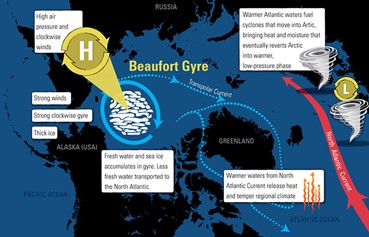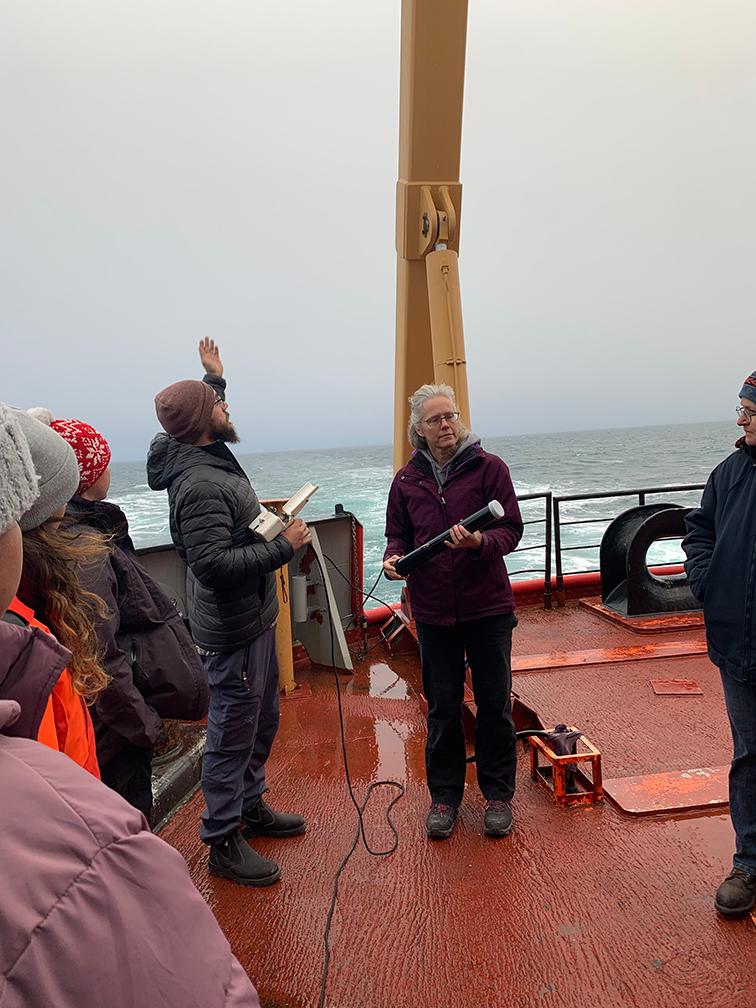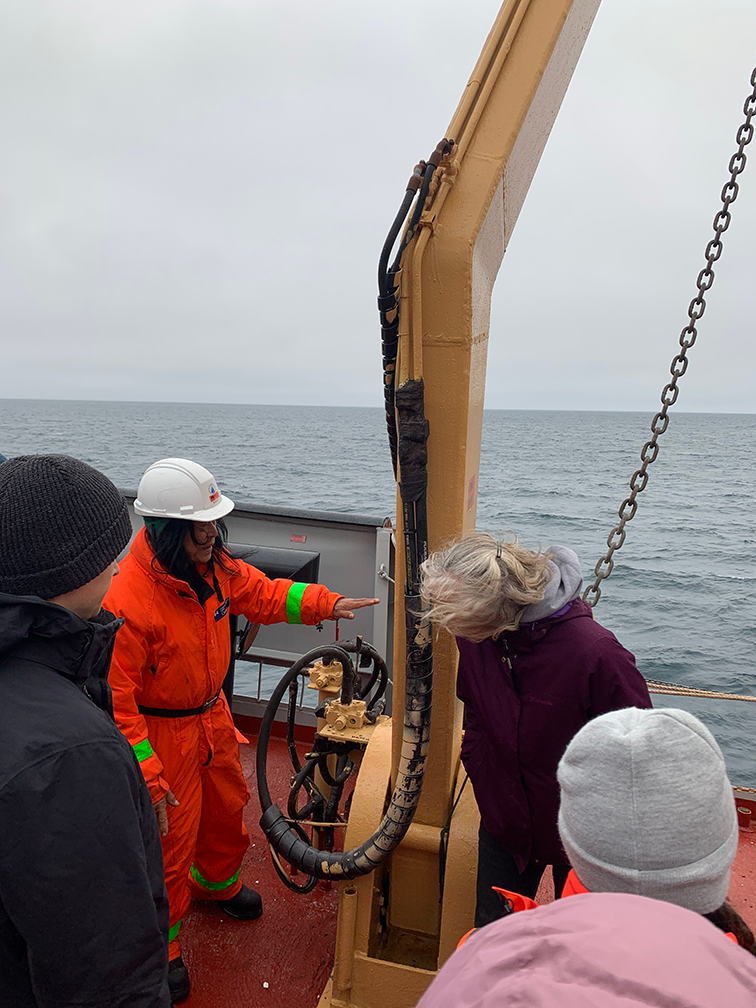Dispatch 2: What is the Beaufort Gyre
Ashley Arroyo and Elizabeth Bailey
September 17, 2022
Today, we continue our journey out of the Canadian Archipelago and towards the Beaufort Gyre. In oceanographic terms, a gyre is a circulation system that is driven by the balance between pressure and the effects of Earth’s rotation. The Beaufort Gyre is one of the main ocean circulation systems in the Arctic Ocean. In the Beaufort Gyre, surface currents flow clockwise around the Canadian Basin. Due to the effects of wind and the Earth’s rotation, freshwater collects at the center of the Beaufort Gyre, making it the Arctic Ocean’s major freshwater reservoir. As of 2021, the Beaufort Gyre held a volume of about 22 × 103 km3 of freshwater, which was approximately 23% greater than it was in 2003 when this science program first began. This reservoir of freshwater affects sea ice and ocean dynamics, as well as ecosystems. In addition, it has the potential to influence the global ocean. A possible of release of this freshwater into the North Atlantic could decrease wintertime deep water formation and affect general ocean circulation, which is responsible for transporting heat throughout the globe.
As for what the science team did today – we prepped for our first station, which we will arrive at late tonight! In anticipation, the crew, who will be working with us on the deck, went through safety (i.e., how to not fall overboard!) and operations for the instruments that will be deployed at each station. Stay tuned for updates on the science that will soon begin!


